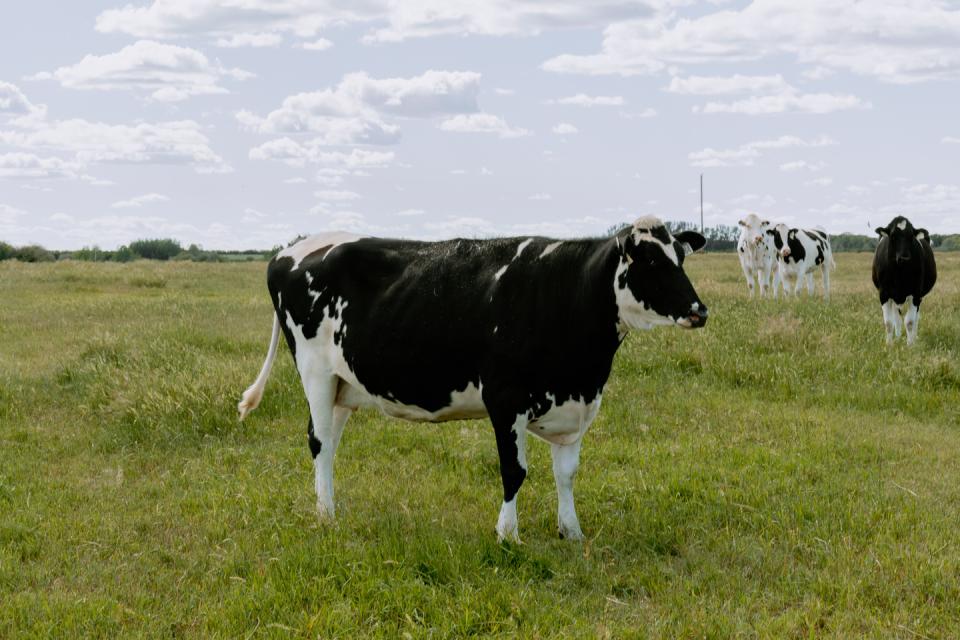This article focuses on a few of the key environmental indicators that are officially tracked for Canadian dairy farms. These key indicators include greenhouse gas (GHG) emissions (commonly known as the carbon footprint), as well as water and land use. The Government of Canada tracks water use and emissions on a regular basis, and farmland used by farms is tracked in the Census of agriculture every five years. These indicators are useful for monitoring changes over time on Canadian dairy farms.
Today, Canadian dairy cows account for 1% of our country’s total GHG emissions.2
Measuring progress with Life Cycle Assessments
Government-tracked indicators are one of several data sources used in environmental Life Cycle Assessments (LCA). The carbon footprint of a unit of milk produced on farms in Canada has been reduced between 2021 vs 2011.1,3 Life Cycle Assessments are quantitative assessments used to measure and evaluate environmental impacts based on internationally standardized (ISO) methodology.
These comprehensive studies systematically take into account factors throughout the milk production life cycle – from the footprint of inputs such as farming equipment, power, crops, cow feed, to the and transportation of milk to the processor’s gate. These dairy LCAs express GHG emissions in the standard carbon dioxide equivalents (CO2-eq), and also track water and land use per internationally standardized litre of milk.
The most recent (2021) Life Cycle Assessments from Canada, compared to the FAO findings show that Canadian milk production has one of the lowest carbon footprints in the world:1,3
-
The production of a litre of milk in Canada generates 0.94 kg of CO2-eq while the global average for producing one litre, according to the FAO, is 2.5 kg;1,3
-
In other words, producing one litre of milk in Canada generates less than half of the GHG emissions compared to the global average of GHG emitted during the production of a litre of milk;1,3
-
From 2011 to 2021, the carbon footprint of a litre of milk produced in Canada decreased by 9%.3
It is noted that 2021 being a drought year, more water was taken in watersheds to grow crops, and it is the biggest factor is the amount of water needed that year. Canadian dairy farmers continue to adopt practices that benefit the environment and this is impacting particularly the GHG emissions and land use indicators, meaning milk is produced with less emissions and less land needed.
Want to learn more?
Learn more about the work of Canadian dairy farmers are making and their ongoing commitment to sustainability.
References
- FAO and GDP. 2018. Climate change and the global dairy cattle sector – The role of the dairy sector in a low-carbon future. Rome. 36 pp. Licence: CC BY-NC-SA- 3.0 IGO. Accessed on February 26, 2025.
- Environment and Climate Change Canada. 2024. National inventory report 1990–2022: greenhouse gas sources and sinks in Canada. Available online at: canada.ca/ghg-inventory. Accessed on February 26, 2025.
- Groupe AGEGO. 2024. Environmental Life Cycle Assessment of Canadian milk. (Report prepared for Dairy Farmers of Canada).


